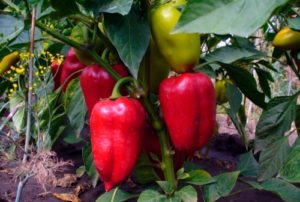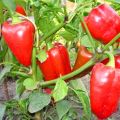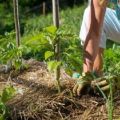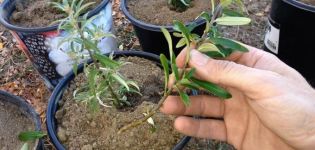Features and secrets of growing Habanero pepper at home
Habanero pepper - the most pungent type of pepper, belongs to the Chile family. Those who, after the spiciness of the Habanero, can taste it, say that it has hints of fruit and citrus. Pepper has a delicate floral aroma.
Habanero is native to South America and Mexico. From the 15th century, it began to spread throughout all countries. In Mexico, a legend is told that, having chosen the victims, the Aztecs told them that instead of a ritual ceremony, they could drink 2 glasses of Habanero tincture.
Description of fruits
Fruits are in the form of a small heart, their weight is 50 g. Up to 2 - 3 kg are harvested from one plant. One bush can tie up to 90 peppers.
Fruits are varied in color: they can be orange, yellow, red, dark brown. By growing the plant correctly, several crops can be harvested per season.
Habanero varieties
Pepper is made scalding because of a special substance - capsaicin. Scoville came up with a gradation of pepper pungency. According to his scale, all Habanero varieties are very hot.
The most mild one is the White Habanero, which has whitish fruits. The place in the middle is occupied by a golden-red pepper. Next come the yellowish peppers Fatali, the homeland of plants - South Africa. Sharper variety called "Devil's Tongue". American breeders have bred the orange pepper variety Tigerpaw NR. The letters NR mean that the variety is not affected by nematodes.
An even hotter pepper is the Chocolate Habanero, which has dark brown peppers. The hottest red-fruited varieties are the Californian Red Savina and the Caribbean Habanero.
Useful properties of pepper
Habanero pepper contains a large amount of: vitamins (A, B, C, D) and trace elements (calcium, iodine, phosphorus, potassium, iron).

Due to the composition when using pepper:
- slags and toxins are removed;
- metabolism accelerates;
- aging of the body slows down;
- the work of the stomach and intestines improves;
- a person is recovering from viral diseases and colds;
- stress resistance increases;
- depression passes;
- pressure decreases;
- back pain disappears;
- arthritis is cured.
Peppers contain capsaicin, which promotes hair growth. You can drip a drop of juice into the hair mask. But they put quite a bit of Habanero in the dishes. The pepper is added for 1 minute, and then removed.
It is necessary to remember about contraindications: Habanero is not advised to be used by children, ulcers and nursing mothers.

Pepper is part of the patch, giving the product analgesic properties. Add Habanero to the frostbite ointment.
Sowing seeds
Pepper cultivation begins with sowing seeds.
Sowing seeds step by step:
- Sow the seeds in February. Wrap them in a damp cloth. Put it warm. Heat is key; if it is not there, the seeds will not germinate at all.
- Make sure the moisture does not dry out. Wait 3 days.
- To plant seeds, prepare peat pots with sterilized soil from 1 part peat, 2 parts earth, 1 part vermiculite, 1 part humus. The soil temperature should be around 26 ° C. The soil should be slightly acidic with a pH of 6.5. Alternatively, you can purchase Morris Green Universal soil.
- When, after 3 - 4 days, the seeds swell and begin to germinate, then plant them, burying them 0.7 cm into the soil. Water the soil before planting. Cover with clear glass or plastic.
- Moisten the soil with a spray bottle at all times to prevent the seeds from washing away.
- After 2 to 4 weeks, the first shoots will appear, then remove the glass or film.
- Young sprouts can be illuminated with fluorescent lamps. Place the lamps at a distance of 10 cm from the seedlings. It is better if the peppers have 16 hours of daylight.
- When 2 real leaves grow, then dive the seedlings. You can transplant it into plastic cups. Further cultivation of seedlings is to reduce daylight hours to 12 hours, leaving the lamp 50 cm from the seedlings.
- Remember to water the seedlings, but do not water them.
- When watering, you can add a root root or a little complex fertilizers to the water: "Ideal", "Florist Growth".
- Temper the seedlings 2 weeks before transplanting, take them out for 1 - 2 hours on the loggia, gradually lengthening the period of the plants being outside.
8-10 weeks after sowing the seeds, when the seedlings are 15 cm tall, continue growing by replanting each seedling into a large pot. Place the pots on the windowsill. If you want to transplant the pepper to a plot or greenhouse, then remember that the air temperature should be +21 ° C during the day, and from 12 ° C at night.
Plant care
Let's consider how to create optimal conditions for harvesting a rich and tasty pepper harvest.
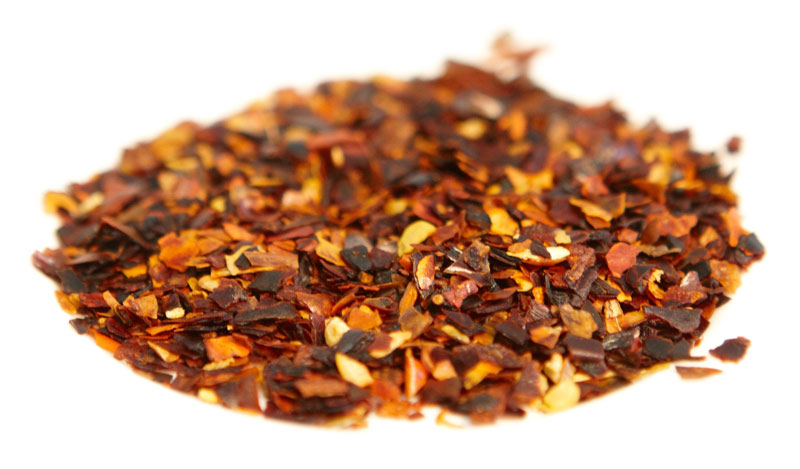
What conditions are required
Habanero pepper is a perennial plant. It has been growing at home for several years. Pepper cultivation is all about providing warmth and bright sunlight. Pepper does not tolerate drafts. Prefers soil with slightly acidic characteristics.
If you decide to grow pepper at home, then place it on the southern windowsill.
Top dressing
Feed the bushes for the first time 15 days after planting the seedlings.
Feed them mineral complex fertilizers for tomatoes and compost. When the pepper begins to bloom, feed it with growth stimulants.
The Dutch organic fertilizer BioGrow works very well. Half a liter of top dressing is dissolved in 250 liters of water. This is enough for 10 years of dressing for peppers growing at home.
Watering
Water the young bushes constantly, but make sure that there is no stagnation of water in the pots, otherwise the plant will get sick.
Reduce watering greatly in winter. Water the pepper plentifully in early April, as it is actively growing foliage at this time. Water those plants that are grown on the windowsill at home twice a day.

Pruning
Cut off some of the leaves. Pinch the top, then the crown will grow lush.
Pollination
If the pepper grows on your windowsill or in a greenhouse, then during flowering, transfer the pollen from flower to flower with a brush.
Yield rationing
When blooming, cut off some of the first flowers. This will help the plants grow strong and produce good yields.
Diseases and pests
Treat the beds before planting with "Karbofos", "Ultra", "Arrow". Once the plants are planted, they can be sprayed with tobacco or onion infusions.
If a nematode attacked the Habanero pepper, then dig the bushes out of the soil so as not to damage the roots. Rinse, and then dip the roots in water with a temperature of 50 - 55 ° C. The nematodes will die.
If the bushes are affected by aphids, whiteflies, and mites, wash the bushes by making a lather with dish soap.Let the plants stand in the foam for an hour. Then rinse it off under the shower with warm water.
If you make an infusion of pepper fruits, you can water your garden crops with it. This infusion will save plants from bedbugs, ants and larvae.
Seed propagation
Hot Lemon and Bengle Naga seeds are sold online. The distributor sends the seeds to Russia.
You can also collect the seeds yourself:
- Leave ripe peppers on the bushes for up to 10 days.
- Then tear off, putting on gloves, spread out so that the fruits wilted somewhat. Do not touch the face with gloves, otherwise there will be burns.
- Cut the fruit and remove the seeds.
- Spread out the seeds and dry.
- When the seeds are dry, place them in paper bags and store.
Fruit use
Peppers are hard to eat when raw. They are seasoned with meat and fish dishes, put in soups, canned food, in the famous Tabasco sauce.
Peppers should not be thrown into boiling oil as they blacken and lose their flavor.
Pepper in an apartment can grow for 7 - 10 years, and you can harvest the fruits several times a year. Habanero is easy to care for. The plant grows well in slightly acidic soil, prefers warmth, bright lighting, regular but moderate watering. Does not tolerate drafts and cold air. The bushes are resistant to disease. They are immune to most pests.
